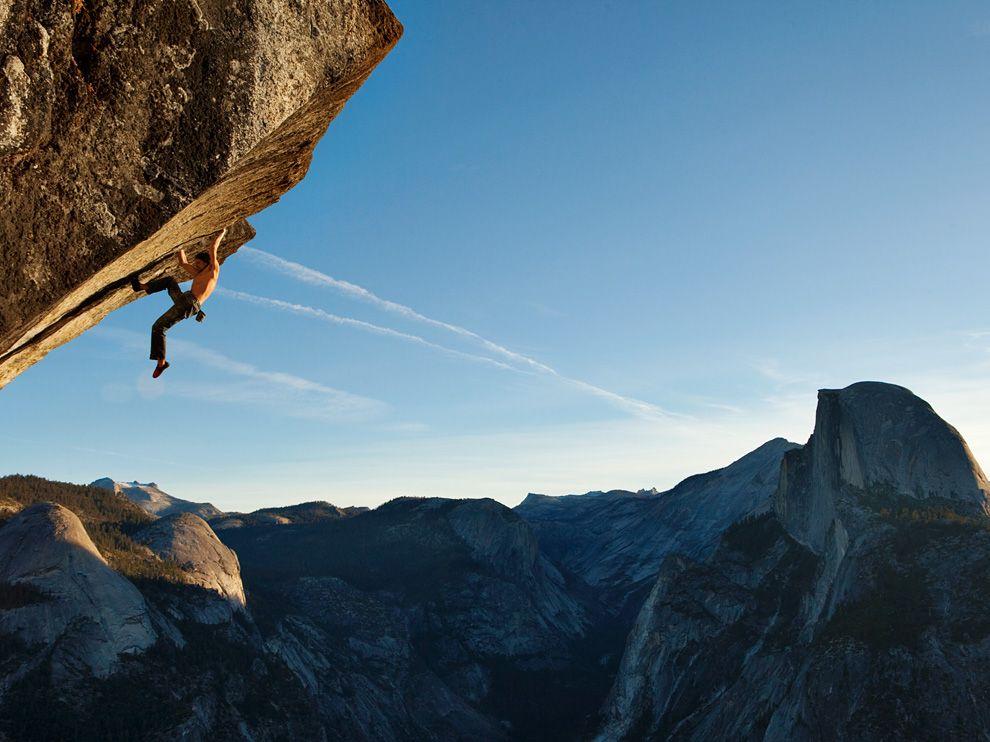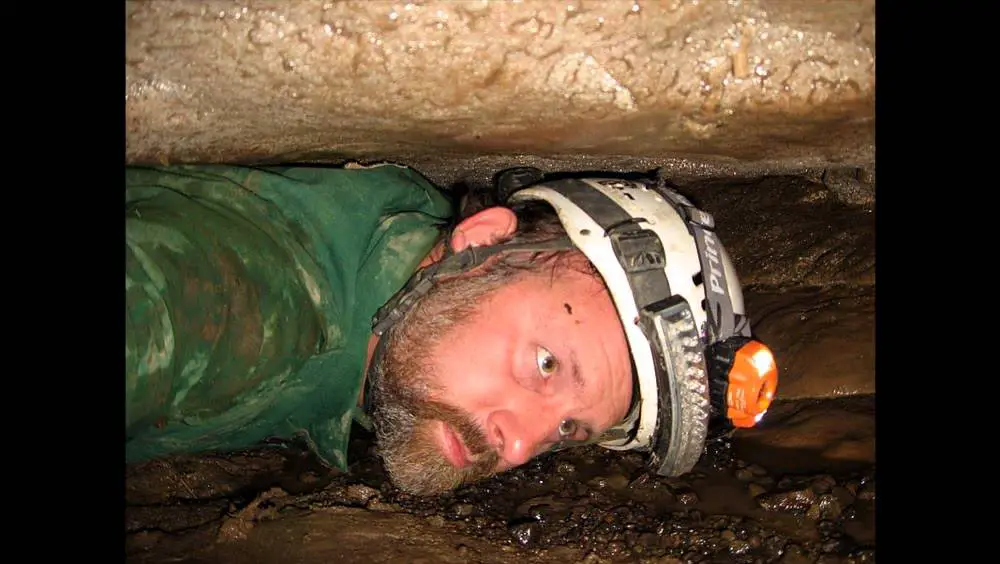Roads are the ultimate metaphor for life. They cut across vast swaths of territory, have a beginning and an end, and they are dotted with scenes and moments that mark a journey, much like life itself. Our language is permeated by road and driving-related metaphors: You come to a fork in the road when you have to make an important decision, or are on the road to ruin when a direction you’ve taken in life is sure to result in disaster; speed bumps become obstacles to progress and when you’re not paying attention at work you fall asleep at the wheel. But roads are much more than that. The road is an instrument of entry and escape, a means to an end and a symbol of progress laden with drama, pain and even death. All roads (or motorways or highways…) pose a risk. The fact that you’re driving alongside other fast-moving vehicles is always dangerous, potentially, at least, and there’s hardly any margin for errors. But some roads, due to their location or the way they were built, make travelling a real gamble. Here are 15 of the most spectacular and hair-raising roads in the world.
Leh-Manali Highway
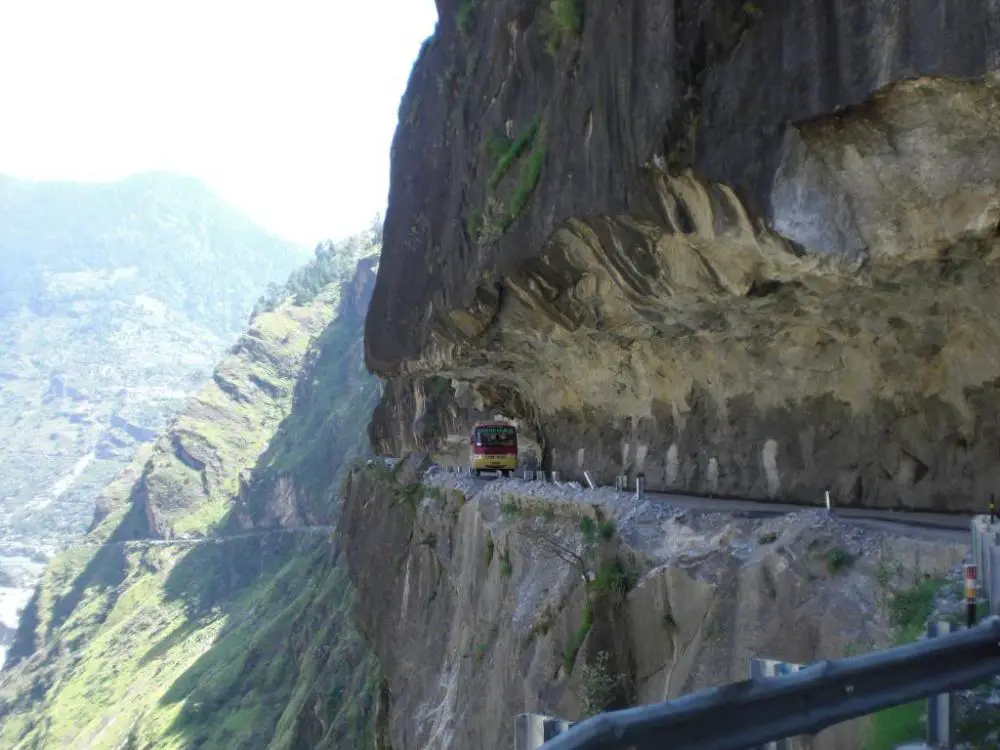
The Leh-Manali Highway appears to graze the heavens. At its highest point, the highway sits at a dizzying 17,480 ft (5,328 m) and is gently enveloped by mountain ranges on both sides. The stunning views of snow-capped mountains and breath-taking drops can quickly turn into a nightmare though. The road has some damaged stretches and dilapidated bailey bridges while the ever-present danger of landslides looms menacingly over the traveller’s thoughts. This road, however, has a poetic and comic side. The highway is strewn with unusual road signs that may put the weary traveller at ease.
Sani Pass
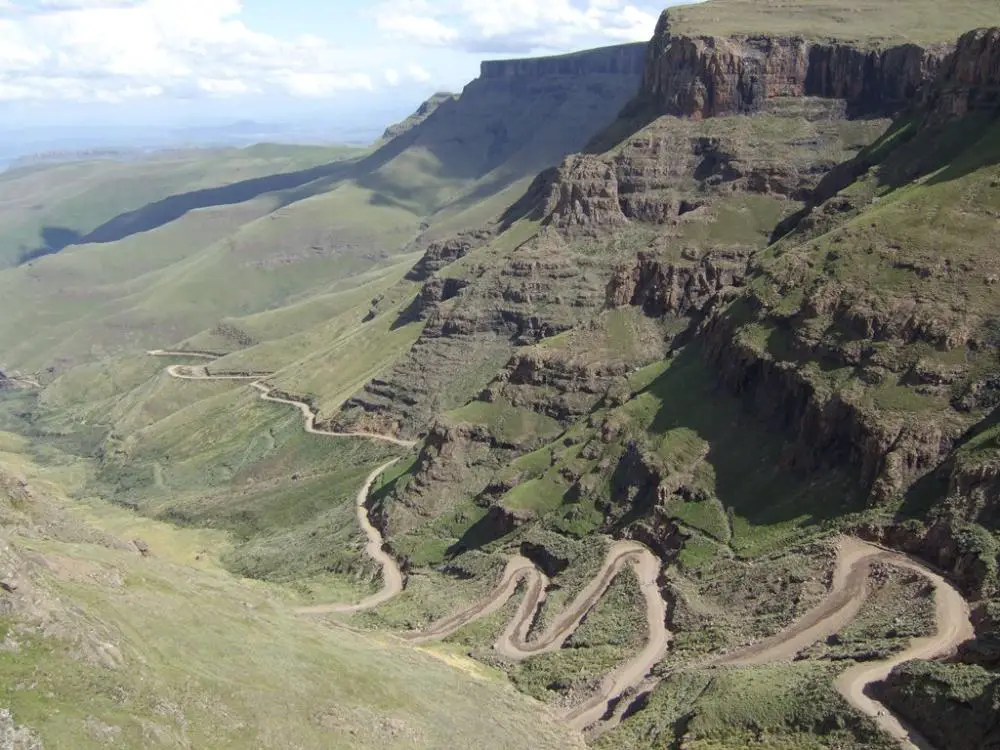
The vertiginous 9-km road that separates South Africa from Lesotho, known as Sani Pass, begs the daring traveller humility when maneuvering its winding gravel surface. The Sani Pass starts at 5065 ft (1544m) and rises to summit at 9435 ft (2876m). Along its dramatic and treacherous paths, travellers can view the remains of vehicles that failed to stay on its steeps gradients and slippery slopes. Needless, to say, many drivers have left their lives on this road.
Guoliang Tunnel

This picturesque tunnel carved out of the Taihang Mountains of China is a tribute to a group of villagers who vowed to break their isolation from the outside world despite the Chinese government’s indifference. In 1972, thirteen villagers from Guoliang took it upon themselves to build this 1.2-kilometer tunnel with no knowledge or experience carving tunnels out of sheer rock. Their efforts paid off. Besides providing access to the village and vice versa, the tunnel has also become a major tourist attraction drawing in globetrotters by the thousands, a welcome turn of events for the village’s economy.
Yungas Road
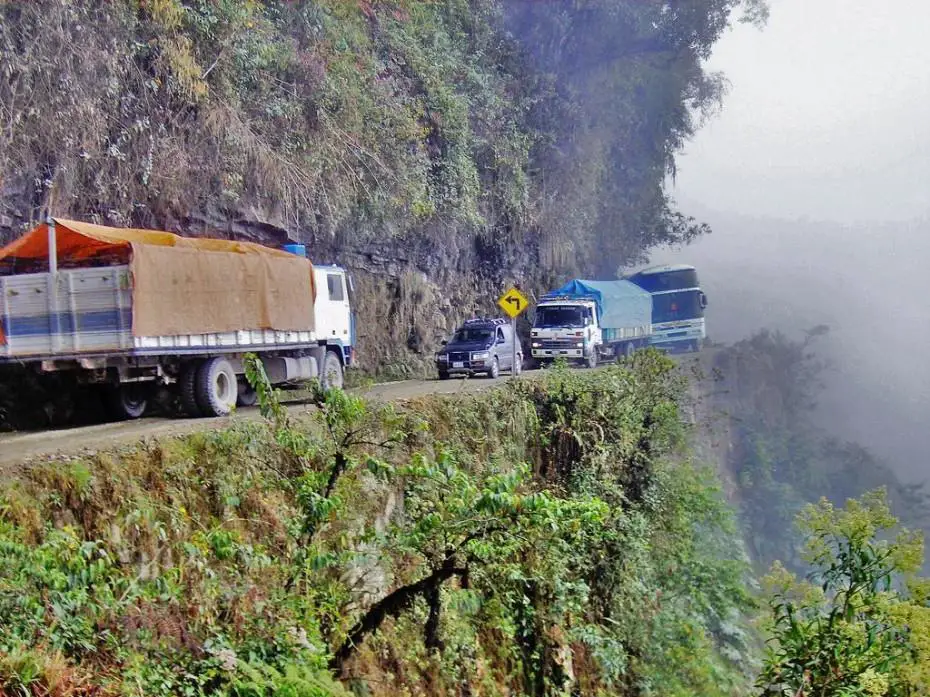
Known as the “Death Road,” Yungas in Bolivia claims the lives of 200 to 300 foolhardy passengers each year, martyred by the road’s spectacular 600-meter drops, lack of guardrails, rockfalls and narrow single lane. The fortunate survivors have placed makeshift memorials to the fallen on the spots where they met their ends. The 96-kilometer Yungas road connects the Amazon rainforest region with the country’s capital, La Paz, and rises to 15,260 ft (4,650 m) before sharply descending to 3,900 ft (1,200 m), transiting quickly from cool Altiplano terrain to rainforest, as it winds through very steep hillsides and atop cliffs; a dramatic change in landscape worth seeing, if you manage to survive the whole way.
Rodovia da Morte
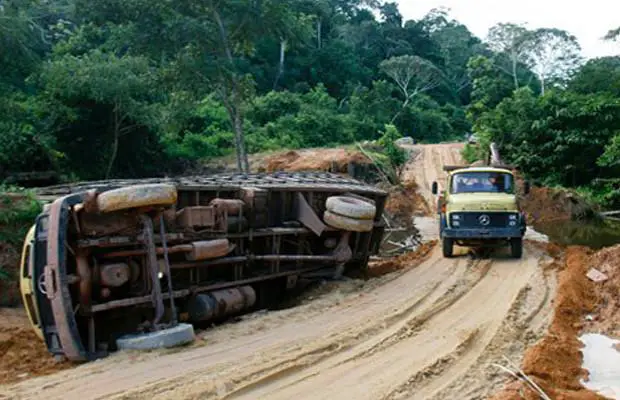
Though not the road’s official name, the population of Sao Paulo hit the nail on the head with this moniker. Brazil’s second longest highway cuts through the country 2,864.65 miles (4,610.21 km) from Fortaleza to Jaguarão; but the section that runs through the state of Sao Paulo, that stretch known as the “Rodovia da Morte,” leads the nation in road accidents and deaths. A combination of inclement weather, road surface and the fact that the SP section clings dangerously from the side of a mountain, makes this road a challenge to traverse. As if all these factors weren’t enough to dissuade motorists from using the BR-116 (the highway’s real name), drivers are also prone to attacks by armed bandits even when nothing else upsets their road trip.
Nanga Parbat Pass
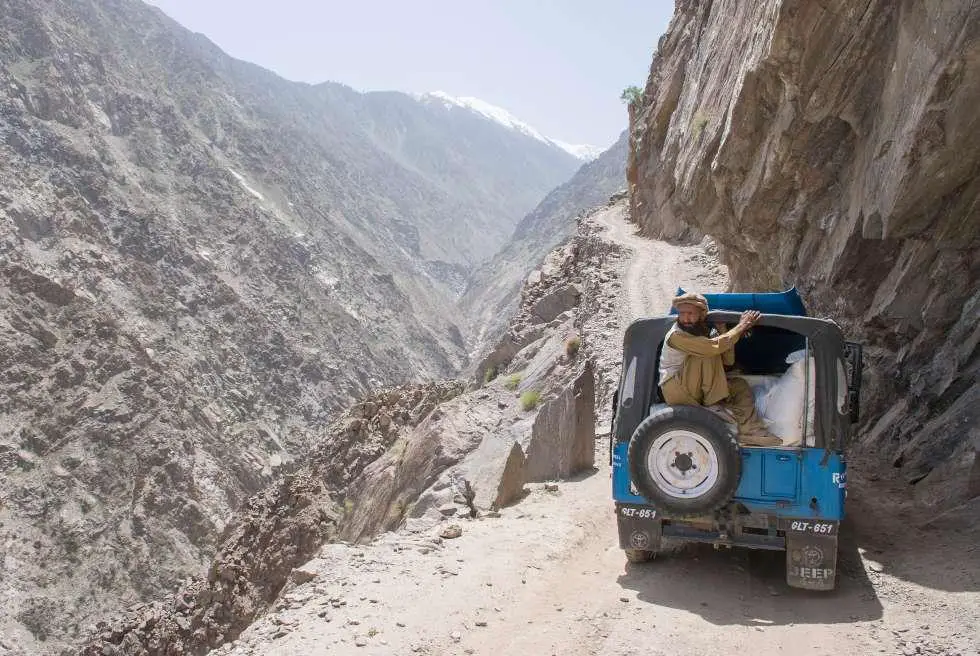
There is a road that leads to the heavens in Pakistan, but it’s not paved in gold. Nanga Parbat, the ninth highest mountain in the world rising to 26,660 feet (8,126 m), is the massively impressive and treacherous western anchor of the Himalayas, the home of the gods of three religions. The exhilarating beauty of Nanga Parbat is set off by its deadliness. Many climbers have met their doom attempting to scale its slopes; some never even made it to the slopes, but died en route on the fragile and narrow road that leads to its base. Sections of Nanga Parbat Pass are so dangerous they can only be crossed on foot, while the whole of the road is unpaved, uneven and nerve-racking. Still, travelling its unsettling surface is worth it just to get a glimpse of the Indus River skirting the broad base of the majestic Nanga Parbat, as it rises to disappear in the heavens.
The Trans-Siberian Highway
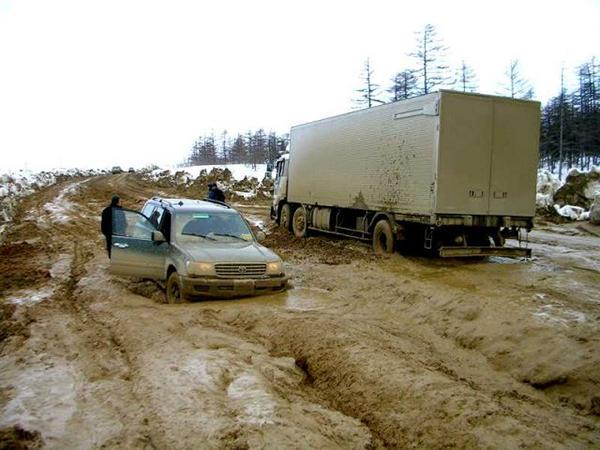
The 6,800-mile (11,000 km) trek from St. Petersburg to Vladivostok on the Trans-Siberian Highway takes the traveller through lush forests, upward spiraling mountains, arid deserts and the frozen tundra. The longest highway in the world (competing against Trans-Canada Highway and Australia’s Highway 1) is certainly one of the most scenic roads in the world, passing through some of the most inhospitable climates in the world. The extreme temperatures make the road’s upkeep a daunting task, leaving large sections full of potholes and others unpaved.
Tianmen Mountain Road
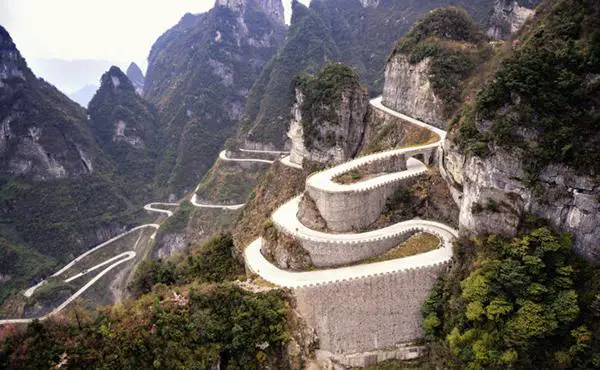
The 7-mile road (11 km) that takes the traveller to the top of Tianmen Mountain, where the peak is crowned with a natural rock arch and hole, that was believed to be the link between the gods and the mortal world, appropriately called Heaven’s Gate, is filled with hairpin turns and sections that seem to spiral upwards. The surrounding views are everything you’d expect from the Chinese landscape, with its eerie beauty; but gazing too much at the scenery could lead to a precipitous fall off a cliff, so be warned.
Karakoram Highway
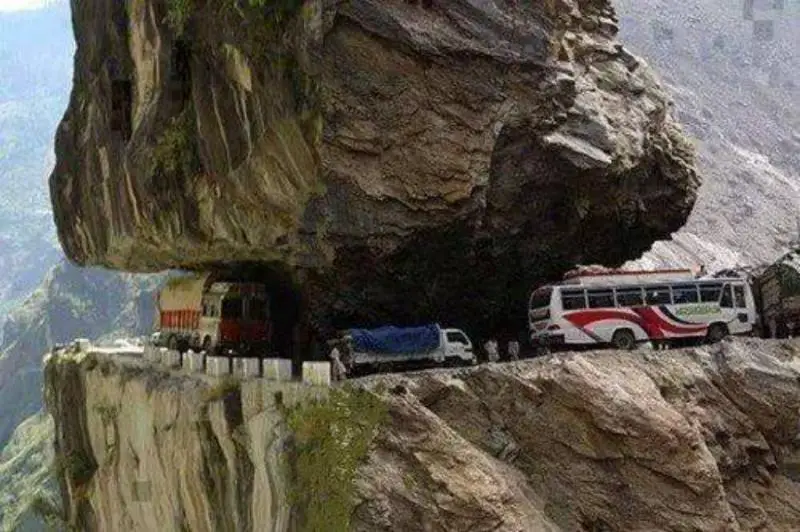
Like all the roads, passes and highways in this part of the world, Karakoram seems to float from its altitude. The road snakes across the Karakoram mountain range at 15,397 feet (4,693 m) to connect China with Pakistan, and as such, is the highest paved international highway in the world. Because of the blood, sweat and tears occasioned by the road’s construction in the late ‘50s (over a thousand Chinese and Pakistani workers lost their lives) and its terrifying altitude, KKH is known as the Eighth Wonder of the World.
Dadés Gorges
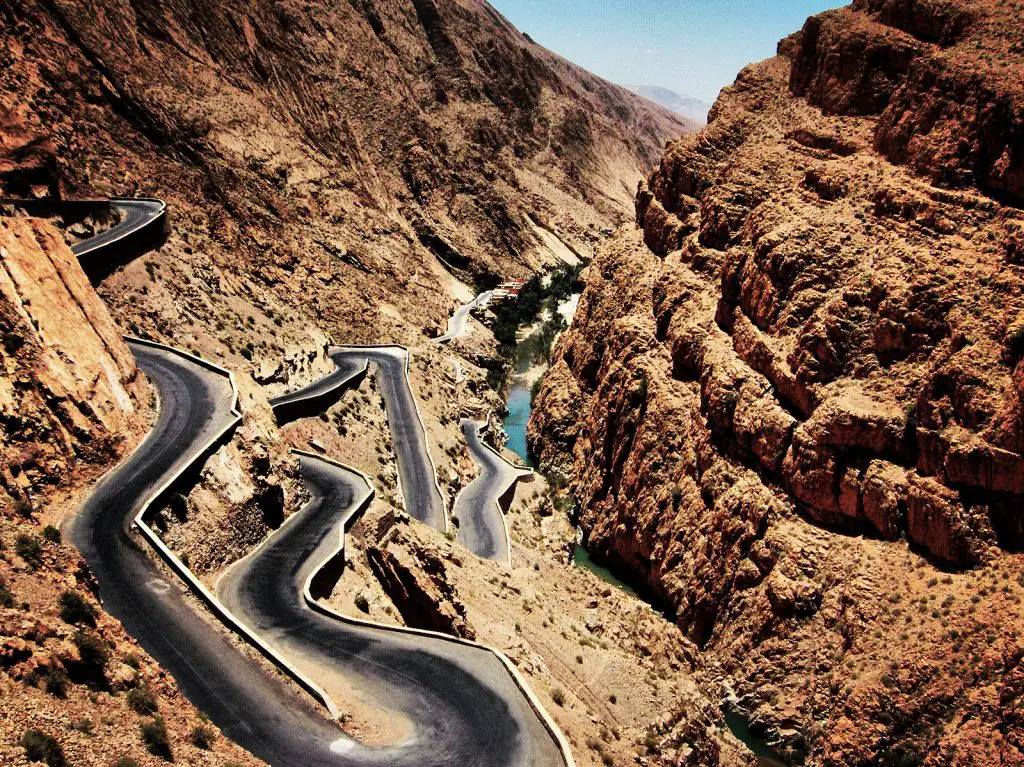
These spectacular Moroccan gorges located between the Atlas Mountains and Anti-Atlas mountain range offers stunning vistas of a thousand Kasbahs nestled in desert settings amid towering snow-capped peaks. The road that cuts through this otherworldly landscape runs 100 miles from Ouarzazate, the gateway to the Sahara desert, to Tineghir and the Todra Gorge, where the unearthly silence of the African lunarscape and the Martian rock formations shimmy the traveller into another dimension.
Amalfi Coast Road
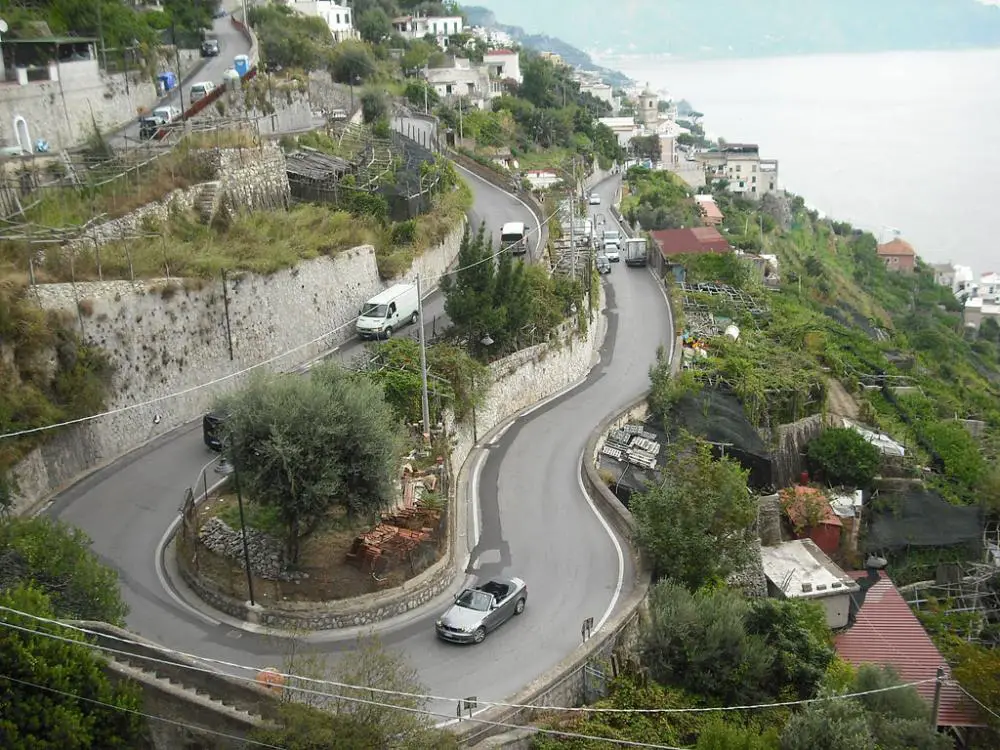
“All roads lead to Rome,” goes the proverb, but if they take a detour through the Amalfi Coast, even better. Hailed by UNESCO as “an outstanding example of a Mediterranean landscape,” the Amalfi coast road provides a scenic tour of the Neapolitan south with its pastel-hued villages terraced into hillsides, corniche roads and luxuriant gardens overlooking the deep blue of the Mediterranean. The road itself is vertiginously curved and extremely narrow, making the unseasoned traveller weep for fear of his life, but the joy of the eternal beauty of Italy is well worth the tears spilled.
Transfagarasan – Romania
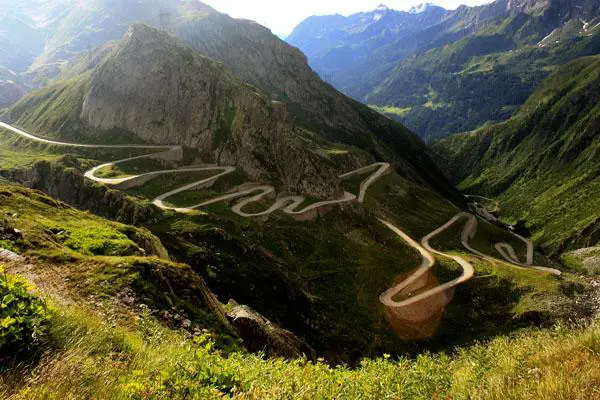
The road’s difficult spelling and pronunciation is a preview of what any motorist can expect from this thoroughfare. Dubbed “Ceaușescu’s Folly,” though no one knows why, the Transfăgărășan road is a winding road with steep hairpin turns, long S-curves, and sharp descents, that will leave you holding your stomach in your hand. Jeremy Clarkson, host of the British TV show Top Gear, declared that Transfăgărășan was “the best road in the world;” and if that’s not enough, there’s always a pit stop at Poenari Fortress, at the road’s southern end, where Vlad The Impaler, aka Count Dracula, terrified Turkish invaders and local villagers before imbibing their blood.
Trollstigen
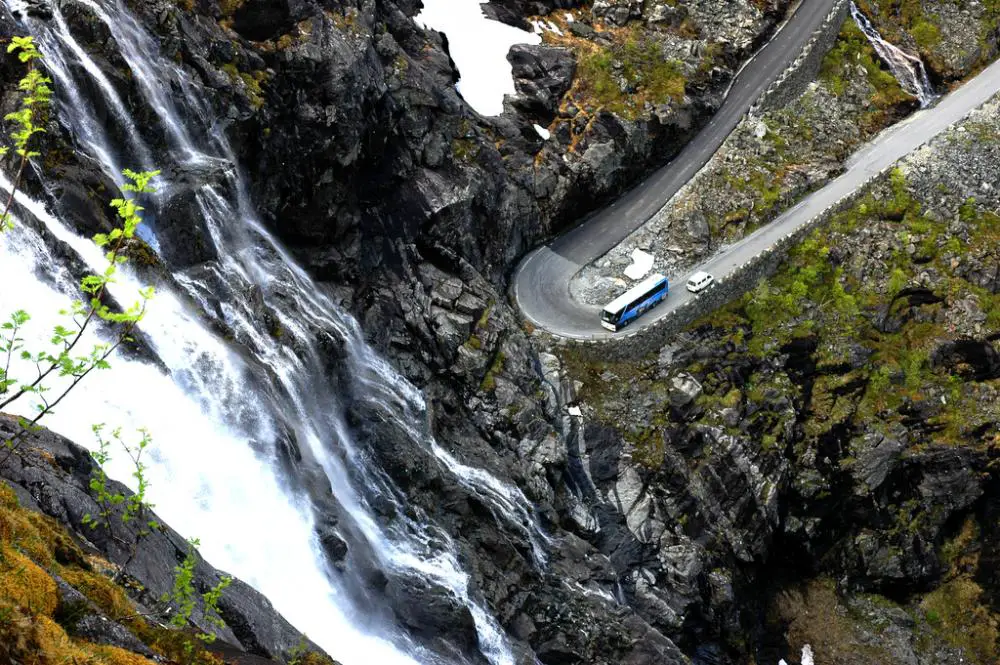
To get the best view of the majestic Nordic landscape, you should rent a car and cruise up and down the Trollstigen mountain road. With a steep incline of 9% and hairpin bends seemingly unattached to the steep mountains, this ride could be better than a rollercoaster. Trollstigen is not recommended for the faint hearted though; the road is narrow and looking down onto the wide valley below as you’re driving along, can trigger vertigo and send your last meal projecting. If you do decide to test Tollstigen, make sure you stop at one of the viewing balconies to fully take in the view or gawk at the beautiful Stigfossen Waterfall.
Ruta40
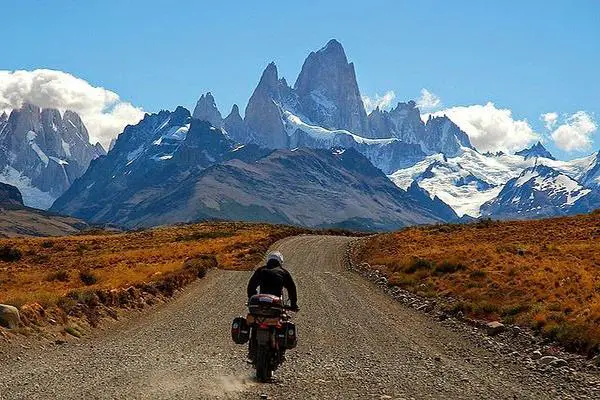
The RN40 in western Argentina glides from Cabo Virgenes in Santa Cruz Province, in the south, to La Quiaca in Jujuy Province, in the north, near the border with Bolivia, running parallel to the Andes Mountains. Ruta 40 begins at sea level at Ríos Gallegos and eventually rises up to 16,404 feet (5,000 m) in Abra del Acay, in Salta, and although there’s no risk of falling off a cliff as you’re driving, several stretches are unpaved. The route, however, does provide plenty of sights. RN40 crosses 20 national parks, 18 major rivers and 27 passes on the Andes.
Stelvio Pass
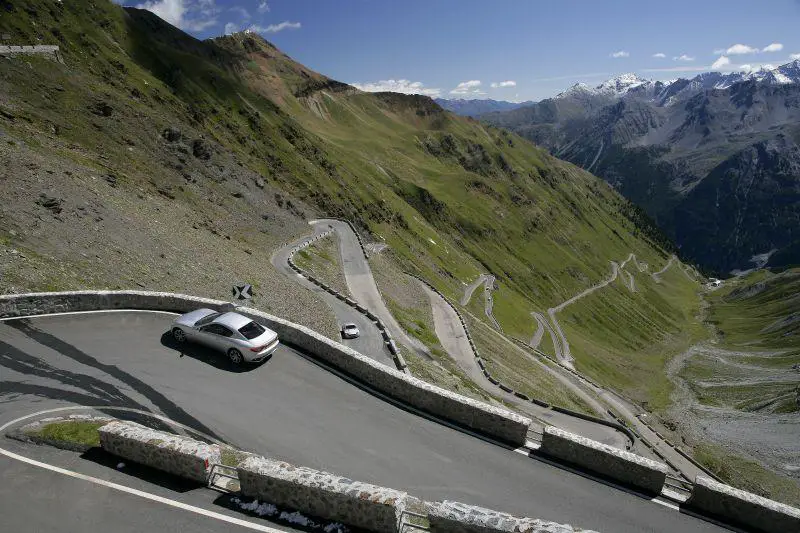
Before Top Gear named Transfăgărăşan the “greatest driving road in the world,” there was another contender for the title and that was Stelvio Pass. Located in Italy at 9045 feet (2757 m), Stelvio is the highest paved mountain pass in the Eastern Alps, and the second highest in the Alps. The road was built in 1820 to link the then Austrian Empire’s Lombardia province to the rest of the country but has since lost much of its strategic importance. Its seventy-five turns are a serious challenge to motorists with several accidents attributed to these deadly curves.



